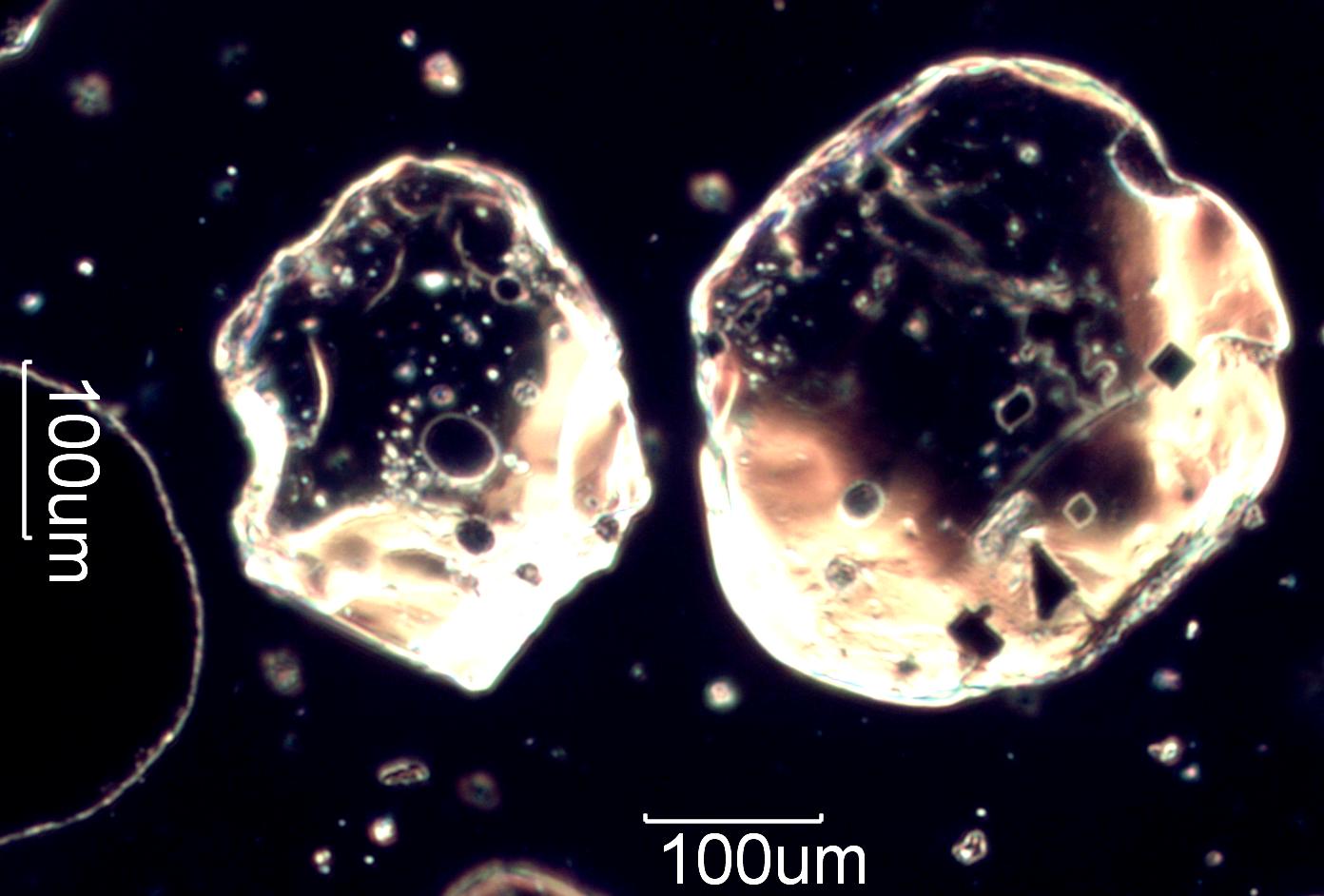Sand, Wiapio Beach, Hawaii, Hawaii
These are the two olivine grains from the center of the earlier image. The grain on the left is showing a match lower than 420 nanometers, 1.715, and the grain on the right show a match at about 440 nanometers, 1.706. The value at 1.715 is near true gamma and indicates a Fosterite percentage of about 80%.
Transmitted Oblique Dispersion Staining, 1.680 HD Refractive Index Medium
Greenberg, Gary, A GRAIN OF SAND: NATURE'S SECRET WONDER, Voyageur Press, 2008.
Welland, Michael, SAND: THE NEVER ENDING STORY, University of California Press, 2009.
http://www.microscopy-uk.org.uk/mag/indexmag.html?http://www.microscopy-uk.org.uk/mag/artjun01/clsand.html
(Good Information on the microscopy of sand, Great site for more information on microscopy in general)
http://www.scientificamerican.com/article.cfm?id=a-grain-of-sand-natures-secret-wonder
(Good Information on Sand with links to more information on sand)
http://www.sciencelive.org/component/option,com_mediadb/task,play/idstr,Open-feeds_fsc_exploring_sedimentary_processes_fsc02_02_m4v/vv,-2/Itemid,97
(Brief, very informative video on what can be learned from the shape of a sand grain.)
Definition/Function:
Olivine is a group (family) of minerals with the general chemical formula of (Mg,Fe)2[SiO4]. Forsterite in the name of the mineral when it contains no iron, chemical formula Mg2[SiO4]. The iron rich end member is Fayalite, chemical formula Fe2[SiO4]. Most olivines contain some magnesium (Mg) and some iron (Fe). Olivine with a Fayalite composition of about 80% is called Chrysolite.Significance in the Environment:
Characteristic Features:
Associated Particles:
References:
Deer, W.A., R.A. Howie, and J. Zussman, AN INTRODUCTION TO THE ROCK-FORMING MINERALS, Longman Scientific & Technical, 1992.Greenberg, Gary, A GRAIN OF SAND: NATURE'S SECRET WONDER, Voyageur Press, 2008.
Welland, Michael, SAND: THE NEVER ENDING STORY, University of California Press, 2009.
http://www.microscopy-uk.org.uk/mag/indexmag.html?http://www.microscopy-uk.org.uk/mag/artjun01/clsand.html
(Good Information on the microscopy of sand, Great site for more information on microscopy in general)
http://www.scientificamerican.com/article.cfm?id=a-grain-of-sand-natures-secret-wonder
(Good Information on Sand with links to more information on sand)
http://www.sciencelive.org/component/option,com_mediadb/task,play/idstr,Open-feeds_fsc_exploring_sedimentary_processes_fsc02_02_m4v/vv,-2/Itemid,97
(Brief, very informative video on what can be learned from the shape of a sand grain.)


